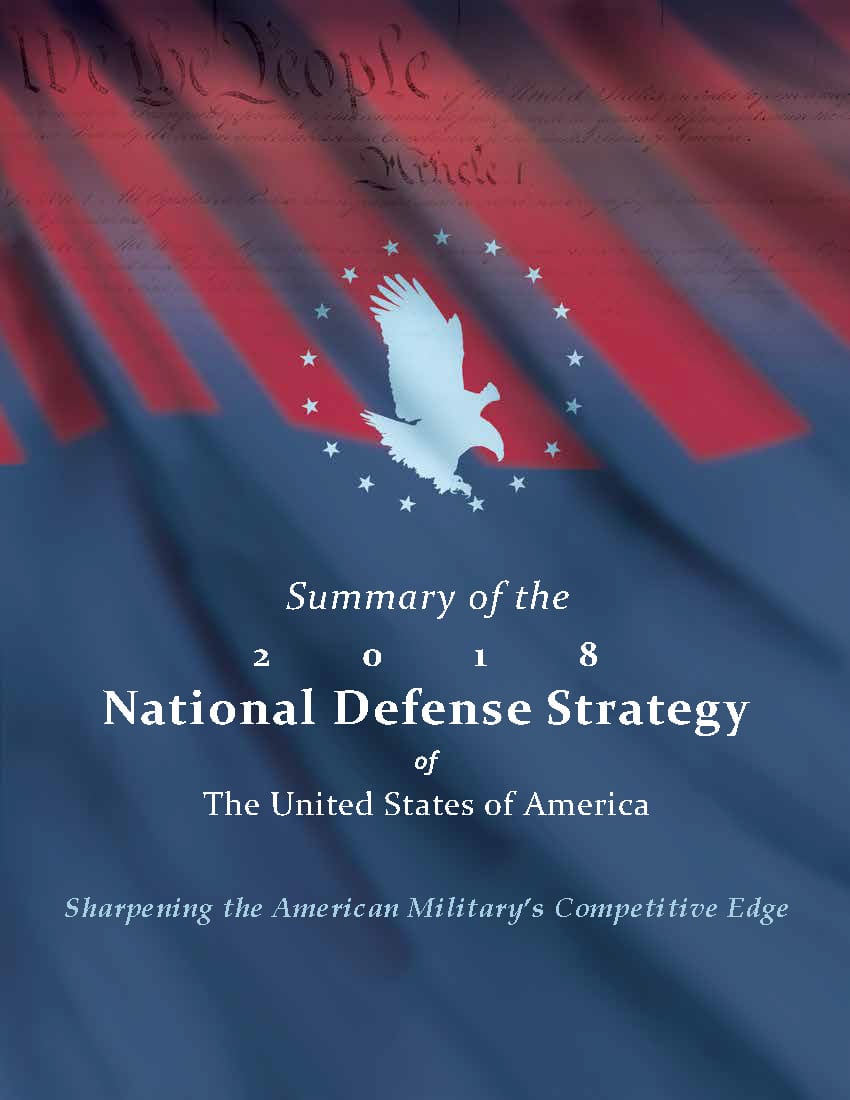Overview of Findings:
The National Defense Strategy (NDS) is the primary planning document that guides decision making within the United States military. The 2018 NDS outlines the priorities of the U.S. within the framework of “great power competition,” particularly focusing on China and Russia in addition to threats from North Korea, Iran, and terrorists. The document notes the challenges of an “increasingly complex security environment.” Climate change is a major factor in this “security environment,” even if left unsaid explicitly by the document.
The 2014 Quadrennial Defense Review, the last time the Department of Defense released a major strategy document, highlighted the threats of a changing environment, noting that,
“The impacts of climate change may increase the frequency, scale, and complexity of future missions, including defense support to civil authorities, while at the same time undermining the capacity of our domestic installations to support training activities.”
Further,
“The pressures caused by climate change will influence resource competition while placing additional burdens on economies, societies, and governance institutions around the world. These effects are threat multipliers that will aggravate stressors abroad such as poverty, environmental degradation, political instability, and social tensions – conditions that can enable terrorist activity and other forms of violence.”
Similarly, the 2010 Quadrennial Defense Review noted that,
“The rising demand for resources, rapid urbanization of littoral regions, the effects of climate change, the emergence of new strains of disease, and profound cultural and demographic tensions in several regions are just some of the trends whose complex interplay may spark or exacerbate future conflicts.”
Today, the effects of climate change have only become more extreme and the threats have, indeed, multiplied. The 2018 NDS outlines how the operating environment is changing, highlighting “challenges to free and open international order and the re-emergence of long-term strategic competition between nations.”
Within this framework, we find that climate change will impact the national security of our nation in three main ways. First, climate change will undermine the existing international order. Second, at the same time, weak states will be more vulnerable to great power influence. And third, threats to the homeland will become closer to home and less concrete, allowing them to permeate our borders. As noted in the NDS, “the homeland is no longer a sanctuary.”
In no place is this shift clearer than in the Arctic. Russia is expanding its influence across eastern Europe and as sea ice disappears, Russia continues to build up its military presence within the Arctic as well. The potential resources and trade routes of an open Arctic would be an obvious advantage. Similarly, China, is challenging the U.S. both on land and at sea. China recently surpassed the United States with the largest Navy in the world, and continues to expand its footprint. While not an Arctic nation, China’s icebreaker fleet is already superior to America’s and they are developing plans for a nuclear icebreaker to add to its growing fleet.
As both countries develop their influence around the world, weaker nations may turn to them for aid and collaboration instead of the United States. The NDS notes that revisionist powers and rogue regimes are using a wide range of tactics to coerce U.S. allies and foes alike. Today, China and Russia are developing relationships in both South America and Africa. The effects of climate change will likely increase instability and insecurity within already vulnerable regions, potentially pushing them towards new partners. China, especially, is using climate-related aid as a new element of leverage.
Finally, the document highlights that “the homeland is no longer a sanctuary.” This is particularly true in regard to climate change. Climate impacts won’t respect the borders of the United States. Rising seas will infiltrate our coastal bases, hurricanes will batter our installations, and wildfires will infringe on training ranges and impact readiness. Each of these trends will intensify far into the future.
In order to protect the security of our nation, the 2018 NDS outlines three main priorities.
- Rebuild military readiness as we build a more lethal Joint Force
- Strengthen alliances as we attract new partners
- Reform the Department’s business practices for greater performance and affordability.
Each of these priorities address the changing operating environment and the future needs of the force.
The below 2018 National Defense Strategy document includes ASP commentary (highlighted in red) based on a comprehensive workshop held at ASP’s offices on July 13th, 2018.






